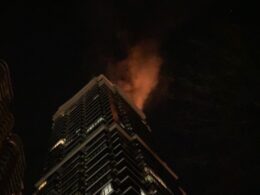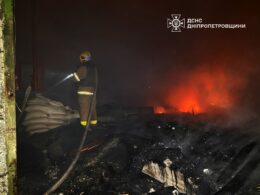Russian forces launched two Molniya drone strikes on Kharkiv on 12 November, hitting residential areas and injuring three civilians, according to the Kharkiv Regional Prosecutor's Office.
Today's attacks on Kharkiv may indicate Russia is testing the drones' effectiveness against civilian infrastructure. As Russians have been extensively testing Molniya on the battlefield since May 2024, now the drone might represent a new threat to Ukrainian cities.
Russia tests new Molniya combat drones on Kharkiv civilians.
Two strikes on residential areas injured 3 people, including a 70-year-old woman. These Russian drones, tested on the battlefield since May 2024, now might pose a new threat to Ukrainian cities. pic.twitter.com/wy4blba9K3
— Euromaidan Press (@EuromaidanPress) November 12, 2024
The first strike hit Kharkiv's northern Saltivsky district at 1:55 p.m. local time, causing two injuries. A second strike at 3:35 p.m. targeted an eleven-story apartment building in the southern Slobidskyi district, injuring a 70-year-old woman.
Built from Chinese components, including plywood, veneer, foam, and 18-mm aluminum tubes, these low-cost drones can carry up to three kilograms of explosives. While they use similar communication and electronics as FPV drones, their 40-kilometer range—far exceeding that of FPV drones—allows Russian forces to target Ukrainian positions previously considered secure from drone threats.
Despite their extended range capability, these drones have shown limited effectiveness in combat, with only about one in eight strikes hitting their intended targets.
Read more:
- At least 11 civilians injured in Russian air attacks, as Ukraine neutralizes most of 110 explosive drones
- Media: Russian drone accidentally hits apartment building in own city of Belgorod
- Russia’s Belgorod Oblast oil depot was on fire after unconfirmed Ukrainian drone strike, while three Russian bombs crash in region





